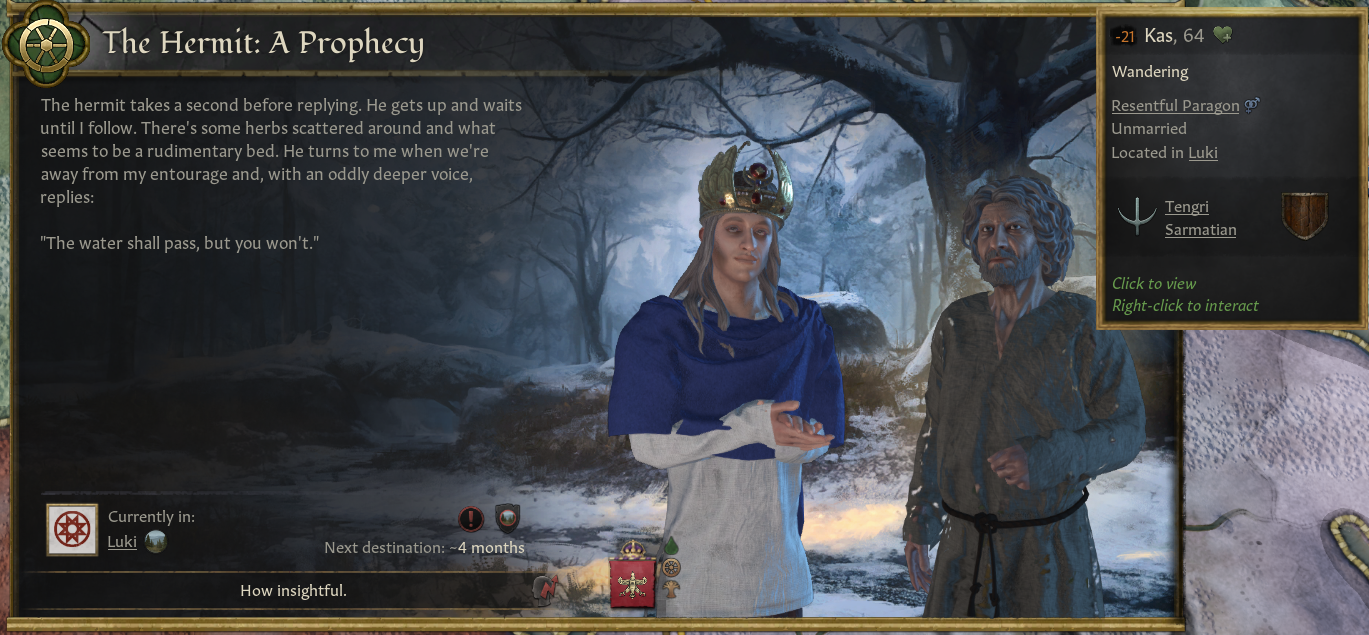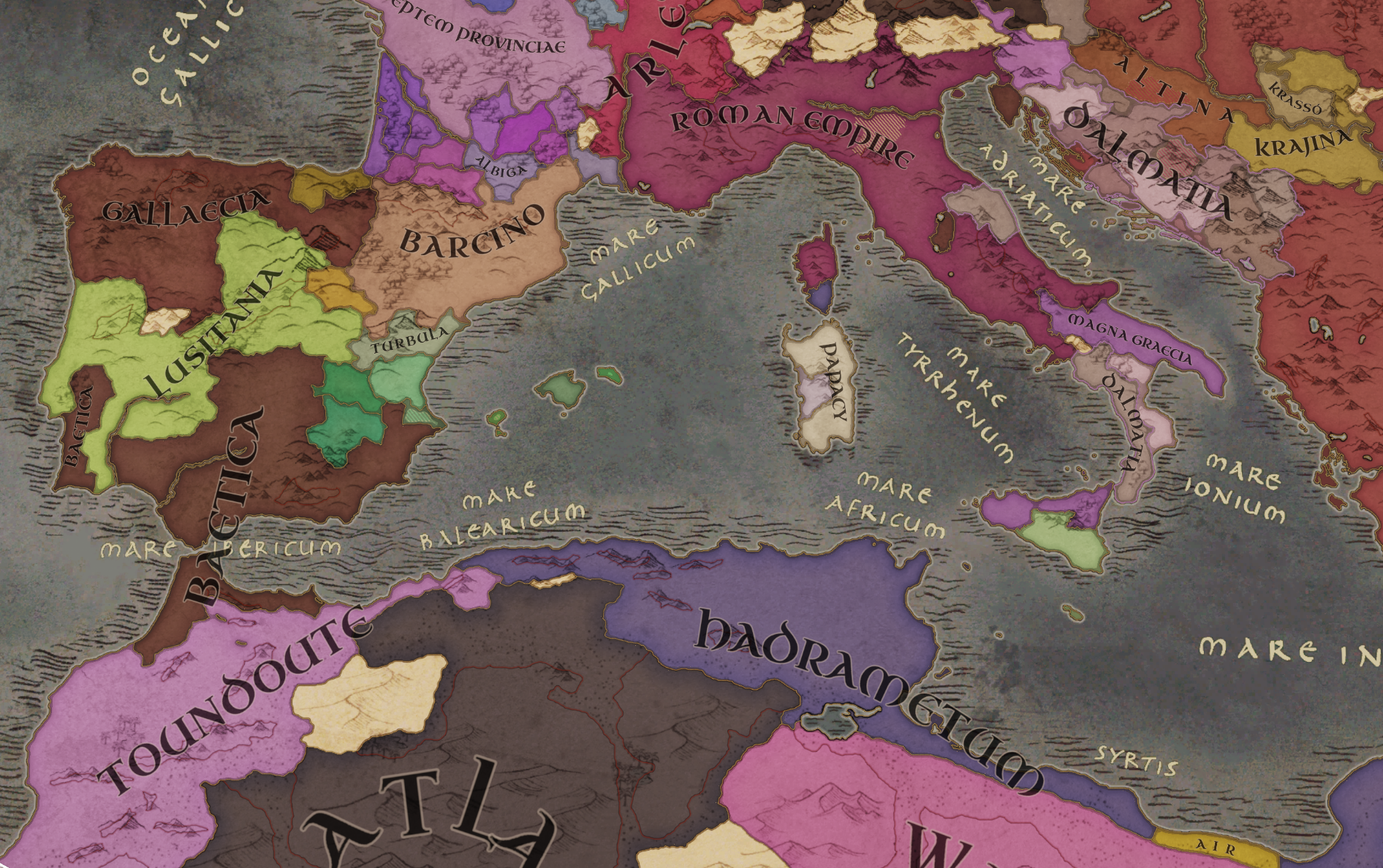Prologue - The Bulgarian Invasion and the Return of the Achaemenids

May, 939 AD
The wind howled like a banshee across the steppes, whipping at Nikola’s weathered face as he surveyed his Bulgar horde. For years, this people, the mighty Bulgars, had roamed the endless plains north of the Danube, a people known for their fierce horsemanship and unwavering loyalty. But whispers of opportunity danced on the wind, whispers that spoke of crumbling kingdoms to the south.
"Brothers!" Nikola roared, his voice a thunderclap against the howling wind. "You took my family in when we had nowhere to go. You offered us shelter and protection when our enemies were hunting us to the ends of the earth. Now, I shall return the gift. For generations, you have ridden the endless plains, but glory awaits us beyond the great river! The Muslims, once masters of these lands, are weak and divided. Now is the time to claim back my birthright, a land of fertile valleys and strong cities!"
A guttural roar rose from the Bulgar ranks, their battle axes flashing in the dying sunlight. The fire of conquest had been ignited. Under the steely gaze of a blood-red moon, the Bulgars crossed the Danube, a tide of horsemen surging southwards.
The initial Muslim response was feeble. Scattered detachments were brushed aside like chaff by the Bulgar storm. Panic rippled through the kingdom. Cities like Silistra, once bastions of an ancient power, fell with shocking ease. The Bulgars, fueled by victory, carved a bloody path deeper into the Balkans only just ravaged by a monstrous and bloody plague half a decade ago. After each battle, the Bulgars yelled “Victory for Khoda! Revenge for the Achaemenids!”

Nikola was no mere barbarian warlord, ravaging territory for plunders’ sake. He was of an ancient bloodline, who had been rulers of a vast empire that had been stolen from them. In his lineage, hallowed names like Cyrus, Darius, Orodes and Otaspes had their deeds inscribed into history. They had been forced to abandon their home nearly a century ago and their successors had considered them an ancient legend, lost to the annals of time. Now it was a time for the Achaemenids to come for those who had wronged them, reclaim the land stolen from their grasp and the enemies they were eager to enact vengeance on.
Nikola was a strategist, a wolf who knew when to strike and when to negotiate. He understood the value of a strong empire, not just plunder. When the Muslims finally offered a truce, he met with their emissary, a pompous noble named Hassan, in a makeshift tent. Hassan, his face pale with fear, looked down upon Nikola, seated on a bearskin throne. Behind him, the ancient banner of House Achaemenid, frayed and patched hung behind him. "Barbarian," he croaked, "we offer you a treaty. Leave our lands and we shall forget this transgression."
Nikola’s dark eyes narrowed. "Transgression? The land we stand on belonged to my ancestors before the Muslims even dreamt of an empire. Now, listen carefully, heathen. We will accept your surrender. You shall cede control of these lands – Moesia, Scythia Minor, Muntenia and Dobrudja. Pray we do not take more.”
Hassim sputtered, his pride bruised. Nikola’s demands were audacious, yet... he had little choice. The Muslim taifas of Byzanstan were divided and more interested to fight among themselves for territory after the collapse of the Caliphate. In the West, the Greek successor states of the old Achaemenid Empire would not aid their enemies against this new barbarian threat.
After days of tense negotiations, a treaty was signed. The Bulgars secured their newly conquered lands, laying the foundation for the Bulgarian Kingdom. Nikola, the man who led them from the steppes, had not just claimed land, he had reclaimed his family’s name in the histories. Though clashes with the Greeks and Byzantines would continue for centuries, the Bulgar presence in the Balkans was a permanent fixture. As for Nikola, he returned to his new capital, Tarnovgrad, his legacy etched in blood and soil – a testament to the unwavering will of the House of Cyrus and the people they had been adopted by.


May, 939 AD
The wind howled like a banshee across the steppes, whipping at Nikola’s weathered face as he surveyed his Bulgar horde. For years, this people, the mighty Bulgars, had roamed the endless plains north of the Danube, a people known for their fierce horsemanship and unwavering loyalty. But whispers of opportunity danced on the wind, whispers that spoke of crumbling kingdoms to the south.
"Brothers!" Nikola roared, his voice a thunderclap against the howling wind. "You took my family in when we had nowhere to go. You offered us shelter and protection when our enemies were hunting us to the ends of the earth. Now, I shall return the gift. For generations, you have ridden the endless plains, but glory awaits us beyond the great river! The Muslims, once masters of these lands, are weak and divided. Now is the time to claim back my birthright, a land of fertile valleys and strong cities!"
A guttural roar rose from the Bulgar ranks, their battle axes flashing in the dying sunlight. The fire of conquest had been ignited. Under the steely gaze of a blood-red moon, the Bulgars crossed the Danube, a tide of horsemen surging southwards.
The initial Muslim response was feeble. Scattered detachments were brushed aside like chaff by the Bulgar storm. Panic rippled through the kingdom. Cities like Silistra, once bastions of an ancient power, fell with shocking ease. The Bulgars, fueled by victory, carved a bloody path deeper into the Balkans only just ravaged by a monstrous and bloody plague half a decade ago. After each battle, the Bulgars yelled “Victory for Khoda! Revenge for the Achaemenids!”

Nikola was no mere barbarian warlord, ravaging territory for plunders’ sake. He was of an ancient bloodline, who had been rulers of a vast empire that had been stolen from them. In his lineage, hallowed names like Cyrus, Darius, Orodes and Otaspes had their deeds inscribed into history. They had been forced to abandon their home nearly a century ago and their successors had considered them an ancient legend, lost to the annals of time. Now it was a time for the Achaemenids to come for those who had wronged them, reclaim the land stolen from their grasp and the enemies they were eager to enact vengeance on.
Nikola was a strategist, a wolf who knew when to strike and when to negotiate. He understood the value of a strong empire, not just plunder. When the Muslims finally offered a truce, he met with their emissary, a pompous noble named Hassan, in a makeshift tent. Hassan, his face pale with fear, looked down upon Nikola, seated on a bearskin throne. Behind him, the ancient banner of House Achaemenid, frayed and patched hung behind him. "Barbarian," he croaked, "we offer you a treaty. Leave our lands and we shall forget this transgression."
Nikola’s dark eyes narrowed. "Transgression? The land we stand on belonged to my ancestors before the Muslims even dreamt of an empire. Now, listen carefully, heathen. We will accept your surrender. You shall cede control of these lands – Moesia, Scythia Minor, Muntenia and Dobrudja. Pray we do not take more.”
Hassim sputtered, his pride bruised. Nikola’s demands were audacious, yet... he had little choice. The Muslim taifas of Byzanstan were divided and more interested to fight among themselves for territory after the collapse of the Caliphate. In the West, the Greek successor states of the old Achaemenid Empire would not aid their enemies against this new barbarian threat.
After days of tense negotiations, a treaty was signed. The Bulgars secured their newly conquered lands, laying the foundation for the Bulgarian Kingdom. Nikola, the man who led them from the steppes, had not just claimed land, he had reclaimed his family’s name in the histories. Though clashes with the Greeks and Byzantines would continue for centuries, the Bulgar presence in the Balkans was a permanent fixture. As for Nikola, he returned to his new capital, Tarnovgrad, his legacy etched in blood and soil – a testament to the unwavering will of the House of Cyrus and the people they had been adopted by.

Last edited:
- 6
- 4











































































































































